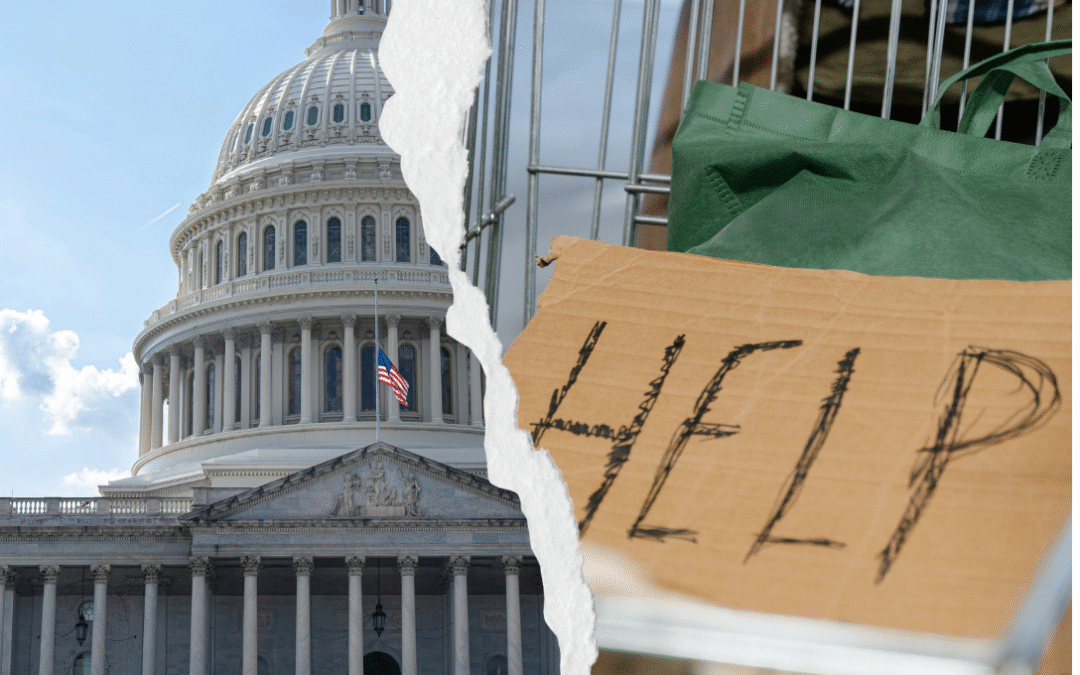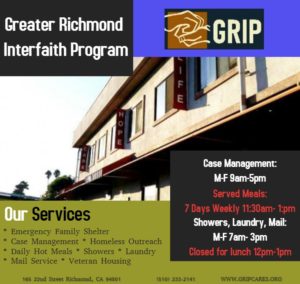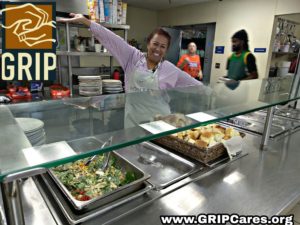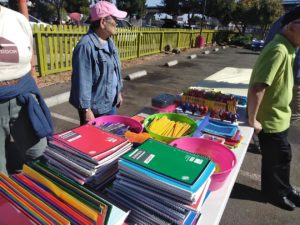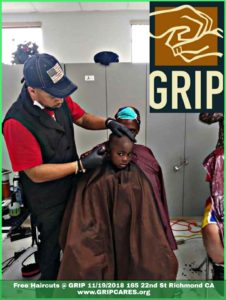It’s a difficult time to be low-income, homeless, or housing-insecure in America right now. No matter your political affiliation, we’re all witnessing an era where policy shifts rapidly, and where instability and unpredictability are starting to become a norm. Our neighbors and community members with less money in the bank are feeling these hits the hardest. It’s easy to feel discouraged, even hopeless. So, the question is, what can we each do to help? We hope that this article can be a starting point to inspire our GRIP community to advocate for policy shifts and strengthen local resources to protect the people who need us. In times like this, all we have is each other.
As the federal administration looks to pare down the governmental budget, programs that provide protection and support for low-income Americans are increasingly under threat. This includes programs such as SNAP (the Supplemental Nutrition Assistance Program, also known as food stamps) and Medicaid health insurance, which are highly likely to see funding reductions, and programs whose funding has also been explicitly threatened, including the HCV (Housing Choice Voucher) program. Resources like the HCV and EHV (Emergency Housing Voucher) programs provide lifeline rental assistance to tenants immediately at risk of becoming homeless, and have helped many individuals and families—including many GRIP shelter residents—move from temporary housing or from the streets into stable, permanent housing.
We understand that many of GRIP’s supporters care deeply about housing justice. As those of us who hold the work of this organization close to our hearts understand, homelessness is not a random or improbable phenomenon. Many families in our communities are only one financial emergency—a lost job, a sudden medical expense, a natural disaster—away from living outside or moving into a shelter. It could be your neighbor, your coworker, or a family member. It could be your household. Homelessness is a problem created by uncaring policy decisions that leave people and families—in many cases, even those working full-time jobs—without other options to address the holes left by unsustainably low wages, rising costs of rent, and other challenges. Please read on to learn how you can take action to interrupt homelessness in your own community, and to pitch in for those who need it.
On May 2nd, the President unveiled a budget request to Congress laying out the administration’s plan to enact cuts to the Department of Housing and Urban Development (HUD). These cuts would significantly curtail HUD’s life-saving services, which include the HCV and EHV voucher programs. A full fiscal year spending request is expected later this month. As the National Low Income Housing Coalition (NLIHC) lays out, “[i]n total, the ‘skinny’ request foreshadows a full request that will aim to slash HUD spending by 44% from FY25, including a proposal that would result in an unprecedented 43% cut to HUD’s rental assistance programs” (NLIHC, 2025).
As Congress begins its work on the annual appropriations process, it’s imperative that people who care take action to pressure Congressional leaders to pass a spending bill in FY26 that preserves current, critical HUD programs by increasing funding for HUD. The NLIHC offers toolkits that can help guide your advocacy work. For example, you can use their Take Action page to look up the office(s) of your district’s member of Congress; call or send them an email today letting them know that you want to see housing resources prioritized in the upcoming budget! The NLIHC also hosts regular webinars discussing the fast-evolving state of housing justice at the federal level and how advocates can get involved. Bay Resistance also offers a toolkit to help advocates get connected to voters in swing state districts to urge them to contact their representatives, specifically in response to Medicaid and SNAP cuts.
Of course, policy work isn’t the only way to make an impact in your community. Mutual aid programs, such as networks that help get groceries to home-bound seniors and people with disabilities, groups that distribute food and medical supplies to unhoused neighbors, and more, are alive and well. Find one in your community today, and get involved! The NorCal Resilience Network is a great place to get started. On their website, you can find a number of mutual aid efforts located in or near your community. Also, VolunteerMatch is a great place to find local opportunities to lend a hand, as well as resources and trainings for volunteers and volunteer coordinators.
Additionally, we’re looking for more helping hands right here at GRIP, where you can make an immediate impact in the lives of our homeless neighbors in Contra Costa. At GRIP, we believe that volunteerism is not just an act of service—it’s an expression of humanity. When a volunteer walks through our doors, they do more than prepare a meal or sort donations—they remind our clients that they are seen, valued, and not alone.
GRIP was founded on the spirit of volunteerism. In the late 1960s, a small group of four churches came together after seeing hunger in their community. With compassion and conviction, they began making sandwiches and soup to feed those in need. While GRIP has grown significantly since those early days, expanding our services and deepening our impact, that original act of kindness—and the volunteer spirit behind it—continues to define who we are today.
Whether it’s offering a warm plate of food to a single adult in our Warming Center, or a kind word to a family navigating the uncertainties of homelessness, our volunteers bring compassion and connection into our shelter and food programs. For those we serve, the presence of a volunteer can be just as powerful as the task itself—a smile, a gentle greeting, or a moment of conversation can uplift spirits and restore dignity. Volunteering isn’t just transformative for those receiving support—it also deeply impacts those who give their time. Our volunteers often share that serving at GRIP reminds them of the power of community and the strength found in acts of empathy. It’s a mutual exchange of humanity that we witness every day.
Before the pandemic, GRIP welcomed around 500 volunteers annually. Today, that number has dropped to just 200. While the need for support has grown, the number of helping hands has not yet returned. We invite you—whether you’re an individual, part of a faith group, a corporate team, or a community organization—to consider volunteering with us. Our primary volunteer opportunity is during lunchtime meal service, with occasional evening dinner shifts. We also offer group projects focused on beautifying our property, from gardening to painting to campus clean-up efforts.
We’re excited to share that Chantel Toliver, formerly our Food Service Supervisor, has stepped into the new role of Volunteer Coordinator. Chantel brings a deep understanding of GRIP’s mission and a welcoming spirit to those who want to get involved. If you or your group would like to volunteer, please reach out to her at ctoliver@gripcommunity.org.
Together, we can ensure that everyone who comes to GRIP—no matter their story—is met with care, dignity, and the unwavering presence of community.

